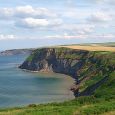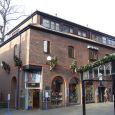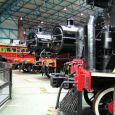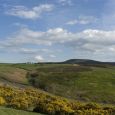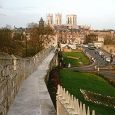York
Advertisement
By Air
Leeds Bradford International Airport is located 11 miles to the north-west of central Leeds, 7 miles north of Bradford and is only 31 miles from York city centre. This airport is a busy facility handling domestic and charter airport flights, as well as some international flights to key European cities. Providing good public transport connections, Leeds Airport has first-rate connections to York city centre, which can be reached by train, coach and bus.
By Rail
York is served by the extensive National Rail network, providing connections to destinations all over the UK. The trip to London takes 4 hours, while from Manchester the journey can be made in 2 hours 10 minutes. From Newcastle it takes 1 hour 10 minutes. York Station is located on Station Road.
By Bus
National Express operates an extensive coach network around the UK, and connects York to all destinations. The bus and coach station is located outside the train station, near the city centre.
By Car
Driving north on the M1 or A1 will take you to the A64 intersection. From here, the city is only 15 minutes away by dual carriageway. Travelling south on the A1, also exit the motorway at the A64. From the west on the M62, join the M1 to the north until you reach the intersection with the A64. York is also linked by the A19, A166 and A1079 routes.
Advertisement
Yorkshire Wolds Route
A route leads from York through the delightful scenery of the North Yorkshire Moors and the Yorkshire Wolds, which rise to heights of up to 800ft/244m, to the North East Coast. Formerly this was a vast sheep-grazing region, with only a thin covering of poor soil over the underlying limestone. Recently, however, the soil has been improved and broad swaths of land have become fertile cornfields, variegated by white crags of rock, attractive clumps of woodland and avenues of tall trees.
Town Walls
A walk along the York town walls will leave a lasting impression of the townscape. Built mainly in the 14th century, they follow the line of the Roman walls for much of the way, and incorporate some Roman work. The walls have a total extent of some 3mi/4.8km, with six gates or "bars". Four of the old gates have been preserved - Walmgate Bar, Monk Bar and Bootham Bar, all with the original portcullis, and Micklegate Bar, with three figures of knights. Micklegate and Monk Bar can be entered. The stretch of wall between Bootham Bar and Monk Bar offers the finest view of the Minster.
National Railway Museum
The National Railway Museum in Leeman Road on the outskirts of the city is very interesting. Its impressive array of locomotives and carriages dating from 1820 to the present document the history of this form of transport. Among the exhibits in the large hall, which is laid out like an old-fashioned railroad station, are a Victorian mail train from 1838, freight and steam trains dating from the turn of the century, a motorail train and luxurious Edwardian Pullman carriages.
Cleveland Way
The Moors are popular with walkers, many of whom follow the Cleveland Way, opened in 1969. This 100mi/160km-long path and bridleway encircles the whole of the national park.
Jorvik Viking Centre
The Jorvik Viking Centre is in Coppergate. This museum documents the daily lives of the Vikings in the ninth/10th centuries. It includes reconstructions of homes in Danish Jorvik, York's former name, and replicas of early medieval workshops.
Information not available
January - February -> 3(°C) - Winter
July - August -> 21(°C) - Summer
Advertisement

